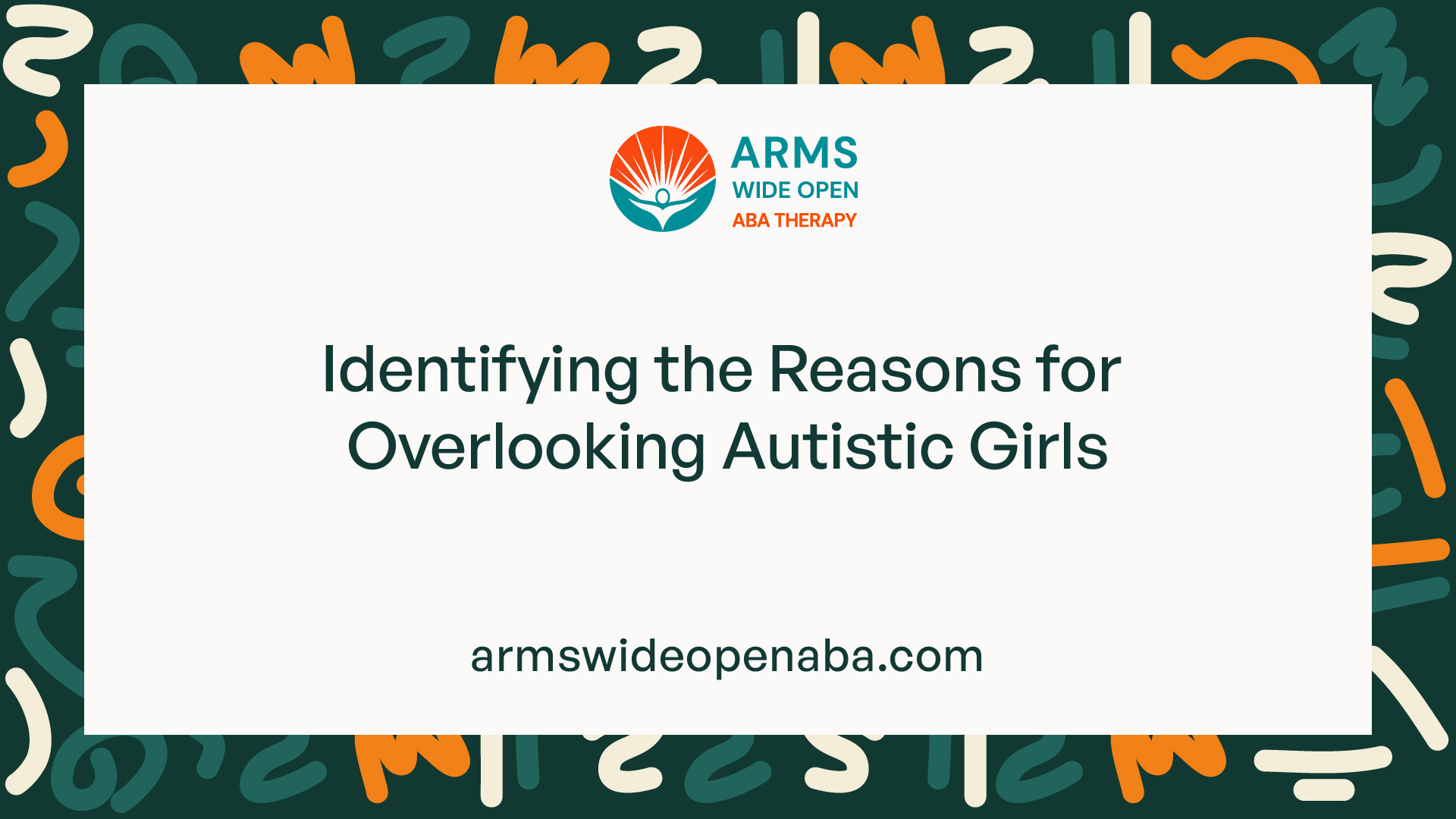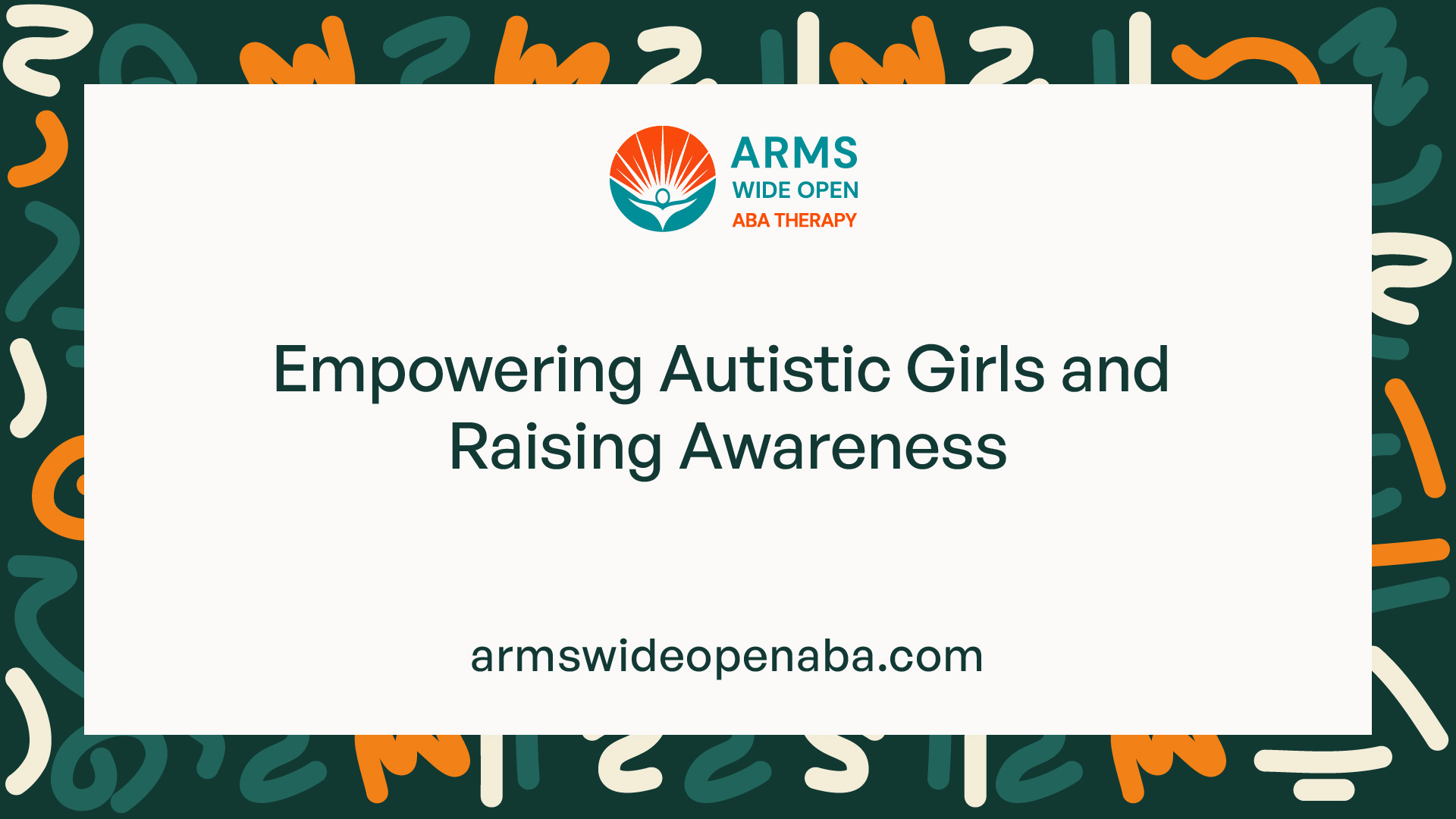Why Many Autistic Girls Are Overlooked
Unveiling the overlooked: Why autistic girls often go unnoticed. Understand the reasons and empower for a more inclusive future.


Uncovering the Invisible Population: Autistic Girls
Autism Spectrum Disorders (ASD) affect individuals regardless of gender, but the experiences and challenges faced by autistic girls often go unnoticed. In this section, we will explore the prevalence of Autism Spectrum Disorders and the recognition of gender differences in autism.
The Prevalence of Autism Spectrum Disorders
Autism Spectrum Disorders are a group of neurodevelopmental conditions characterized by difficulties in social interaction, communication, and repetitive behaviors. While ASD affects both boys and girls, research suggests that it is more commonly diagnosed in boys. However, recent studies have started to shed light on the prevalence of autism in girls.
According to the latest estimates by the Centers for Disease Control and Prevention (CDC), approximately 1 in 54 children in the United States are diagnosed with ASD. However, the gender ratio varies significantly. On average, boys are diagnosed with ASD at a higher rate than girls, with a ratio of about 4:1. This gender imbalance has contributed to the under-identification of autistic girls.
Recognition of Gender Differences in Autism
In recent years, there has been growing recognition of the unique presentation of autism in girls. Traditionally, diagnostic criteria and research studies focused predominantly on male participants, leading to a lack of understanding about the nuances of autism in girls. However, as awareness has increased, professionals and researchers have started to explore the gender differences in autism.
Autistic girls often demonstrate different behavioral patterns and coping mechanisms compared to their male counterparts. They may engage in masking or camouflaging behaviors, where they consciously or unconsciously imitate social behaviors to fit in and hide their autistic traits. This masking behavior can make it difficult for girls to receive an accurate diagnosis, as their difficulties may be overlooked or attributed to other factors.
Moreover, gender stereotypes and diagnostic biases have played a role in the under-identification of autistic girls. Autism is often associated with certain stereotypical behaviors that are more commonly observed in boys, leading to a misconception that girls are less likely to be autistic. This bias can result in delayed or missed diagnoses for autistic girls, depriving them of the support and interventions they need.
By understanding the prevalence of Autism Spectrum Disorders and recognizing the gender differences in autism, we can begin to address the challenges faced by autistic girls. The next section will delve into the specific obstacles that autistic girls encounter, including masking behaviors and gender biases in diagnosis.
Challenges Faced by Autistic Girls
Autistic girls often face unique challenges that contribute to their invisibility and underdiagnosis. These challenges can be categorized into two main areas: masking and camouflaging behaviors, and gender stereotypes and diagnostic bias.
Masking and Camouflaging Behaviors
Autistic girls are more likely to engage in masking and camouflaging behaviors compared to their male counterparts. Masking refers to the act of suppressing or hiding autistic traits in order to fit in and conform to societal expectations. Camouflaging goes a step further, where girls may actively mimic neurotypical behaviors to blend in with their peers.
The ability to mask and camouflage can make it difficult for others, including parents, teachers, and healthcare professionals, to recognize the signs of autism in girls. These behaviors can create a false impression that the girls are coping well and do not require support or intervention. However, behind the mask, girls may be struggling with anxiety, sensory overload, and social difficulties.
Gender Stereotypes and Diagnostic Bias
Gender stereotypes and diagnostic bias also contribute to the overlooking of autistic girls. Autism has traditionally been seen as a predominantly male condition, leading to a lack of awareness and understanding of how it presents in girls. Diagnostic criteria and assessment tools have primarily been developed based on male characteristics, making it more challenging to identify autism in girls.
Gender biases can result in girls being misdiagnosed or diagnosed later in life, if at all. Girls may present with different autism symptoms compared to boys, such as stronger social imitation skills and better masking abilities. These differences can lead to a misunderstanding of their needs and difficulties, further perpetuating the invisibility of autistic girls.
To address these challenges and ensure that autistic girls receive the support and recognition they deserve, it is crucial to raise awareness about the unique experiences and characteristics of autistic girls. By challenging gender stereotypes, promoting inclusive diagnostic criteria, and providing appropriate training to healthcare professionals, we can work towards a more inclusive and understanding society for autistic girls.

Identifying the Reasons for Overlooking Autistic Girls
Despite the growing awareness of autism spectrum disorders (ASD), many autistic girls continue to be overlooked or misdiagnosed. This section explores some of the key reasons behind this issue: diagnostic criteria and gender bias, as well as social and communication differences in girls.
Diagnostic Criteria and Gender Bias
The diagnostic criteria for ASD were initially developed based on observations of predominantly male individuals. As a result, the criteria may not fully capture the unique characteristics and behaviors exhibited by autistic girls. This gender bias in diagnostic criteria can lead to underidentification or misdiagnosis of autistic girls.
To address this issue, researchers and clinicians are advocating for the inclusion of gender-specific criteria in the diagnostic process. By recognizing and incorporating the diverse presentation of autism in girls, healthcare professionals can improve the accuracy of diagnoses and ensure that autistic girls receive the support they need.
Social and Communication Differences in Girls
Autistic girls often exhibit social and communication differences that may differ from those commonly associated with autism in boys. While boys with autism may display more obvious social difficulties, girls might develop coping mechanisms to camouflage their autistic traits, making it harder to identify their needs.
Girls with autism tend to have a strong desire for social connection, but struggle with the social nuances and unwritten rules that govern social interactions. They may imitate their peers' behavior, mask their difficulties, and mimic typical social engagement, leading to a false appearance of social competence. This masking can make it challenging for parents, teachers, and healthcare professionals to recognize the presence of autism.
Moreover, girls with autism often excel in certain areas of social communication, such as nonverbal communication, empathy, and imitation skills. These strengths can mask their underlying social and communication difficulties, further complicating the identification process.
Understanding and recognizing these gender-specific social and communication differences is crucial for accurately identifying autistic girls and providing them with appropriate support.
Gender Differences in Communication
Girls with autism may have better nonverbal communication skills compared to boys.
Girls may imitate their peers' behavior to mask their difficulties.
Girls may have a strong desire for social connection but struggle with social nuances.
Social and communication differences in girls may differ from the stereotypical presentation of autism.
Identifying the reasons behind the overlooked population of autistic girls is an essential step towards improving their support and well-being. By addressing the issues of diagnostic criteria and gender bias, as well as understanding the unique social and communication differences in girls, we can work towards a more inclusive and accurate understanding of autism in girls.
Impact on Support and Interventions
When it comes to supporting and providing interventions for autistic individuals, the challenges faced by autistic girls often result in delayed diagnosis and limited access to appropriate services. This section will explore the impact of these challenges and discuss the importance of tailoring interventions specifically for autistic girls.
Delayed Diagnosis and Access to Services
Autistic girls are frequently overlooked and experience delayed diagnosis compared to their male counterparts. The diagnostic criteria for autism spectrum disorders (ASD) have traditionally been based on observations of autistic boys, leading to a lack of recognition and understanding of how autism may present differently in girls.
The delay in diagnosis can have significant consequences for autistic girls, as it hampers their access to essential support services and interventions. Without an early diagnosis, girls may miss out on vital therapies, educational accommodations, and specialized programs that can help them thrive and reach their full potential.
Tailoring Interventions for Autistic Girls
To address the specific needs of autistic girls, it is crucial to tailor interventions that consider their unique challenges and strengths. Girls on the autism spectrum often exhibit masking and camouflaging behaviors, which can make it harder to identify their difficulties and provide appropriate support.
Interventions for autistic girls should focus on providing a safe and inclusive environment that encourages self-expression and emphasizes social communication skills. This may involve teaching girls how to navigate social interactions, recognize and express their emotions, and develop strategies for managing sensory sensitivities.
Furthermore, it is important to promote gender-inclusive research that explores the experiences of autistic girls and informs the development of evidence-based interventions. By incorporating diverse perspectives and understanding the nuances of how autism presents in girls, professionals can better support and advocate for the needs of this often overlooked population.
Understanding the impact of delayed diagnosis and the necessity of tailored interventions is crucial in ensuring that autistic girls receive the support they require to thrive. By raising awareness, advocating for gender-inclusive research, and promoting understanding and acceptance, we can work towards a more inclusive society that recognizes and values the unique experiences of autistic girls.

Empowering Autistic Girls and Raising Awareness
In order to address the issue of overlooked autistic girls, it is crucial to empower them and raise awareness about their unique experiences. By advocating for gender-inclusive research and promoting understanding and acceptance, we can work towards a more inclusive society.
Advocacy for Gender-Inclusive Research
Advocating for gender-inclusive research is essential to gain a better understanding of how autism presents in girls. It is important to recognize that autism may manifest differently in girls compared to boys. By conducting research that specifically focuses on the experiences of autistic girls, we can gather valuable insights and develop more effective strategies for identification, diagnosis, and support.
Promoting gender-inclusive research involves ensuring that studies include a diverse range of participants, including both boys and girls. This can help uncover the unique challenges faced by autistic girls, such as their tendency to mask or camouflage their symptoms. By advocating for research that addresses these gender differences, we can contribute to a more accurate and comprehensive understanding of autism spectrum disorders in girls.
Promoting Understanding and Acceptance
Promoting understanding and acceptance is key to creating a supportive environment for autistic girls. By increasing awareness and challenging stereotypes, we can foster a more inclusive society that recognizes and values the strengths and abilities of autistic individuals.
One way to promote understanding is through education and awareness campaigns. These initiatives can help dispel misconceptions about autism and raise awareness about the challenges faced by autistic girls. By providing accurate information and sharing personal stories, we can help people develop a more empathetic and informed perspective.
Additionally, creating safe spaces and support networks specifically tailored for autistic girls can be instrumental in promoting acceptance. These spaces can provide opportunities for girls to connect with others who share similar experiences, build self-confidence, and develop a sense of belonging.
By empowering autistic girls and raising awareness about their unique needs and experiences, we can work towards a more inclusive and supportive society. Through advocacy for gender-inclusive research and promoting understanding and acceptance, we can ensure that autistic girls receive the recognition, support, and opportunities they deserve.
Sources
https://childmind.org/article/autistic-girls-overlooked-undiagnosed-autism/
https://www.bu.edu/articles/2022/why-many-autistic-girls-go-undiagnosed/
Similar articles
We’re here to help you

Our team is here to assist you in this process. Contact us for any assistance.
it’s easy to apply
We Accept Most Insurances
Our in-network insurance partnerships make ABA therapy more accessible to families throughout our service areas.







Our Insurance Process
We'll request your insurance details to help us verify your plan's coverage for ABA therapy. Once we've received this information, we'll walk you through your benefits, including copayments, deductibles and out-of-pocket maximums, so you know what to expect in advance.
Our team will then handle the preauthorization and all the necessary paperwork.
.svg)





















.jpeg)


































.jpeg)




.jpeg)







.jpeg)











.jpeg)
















